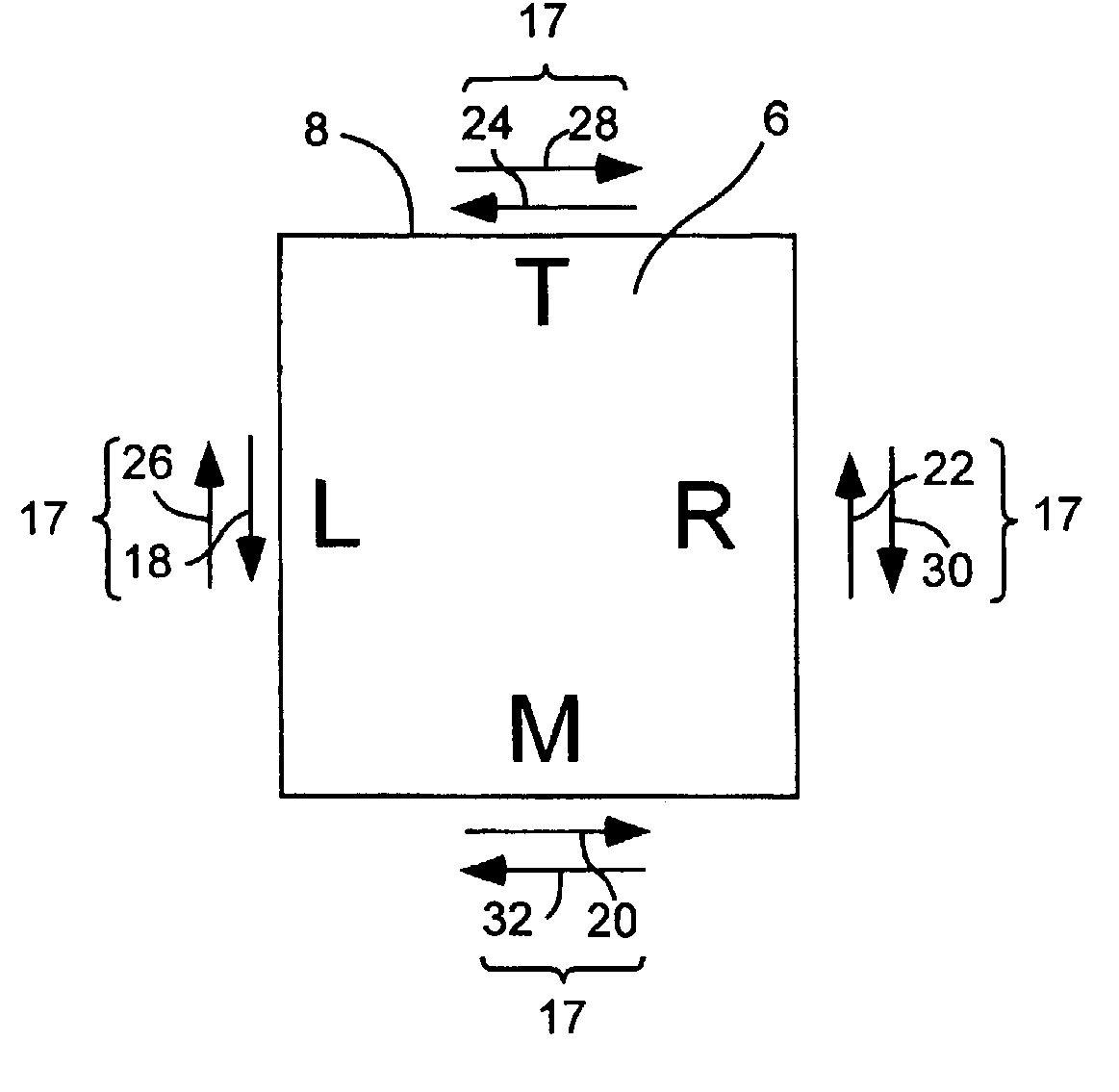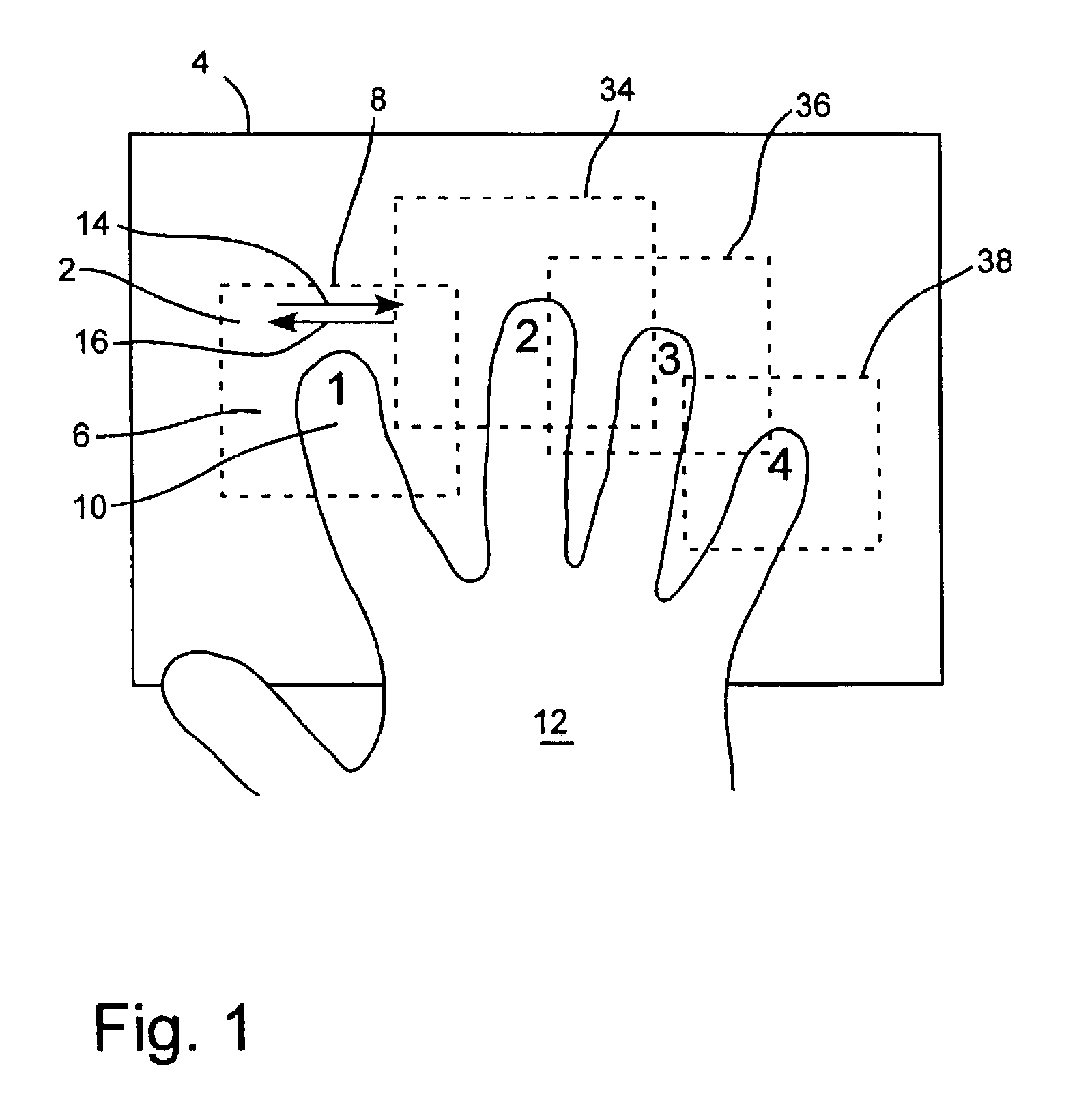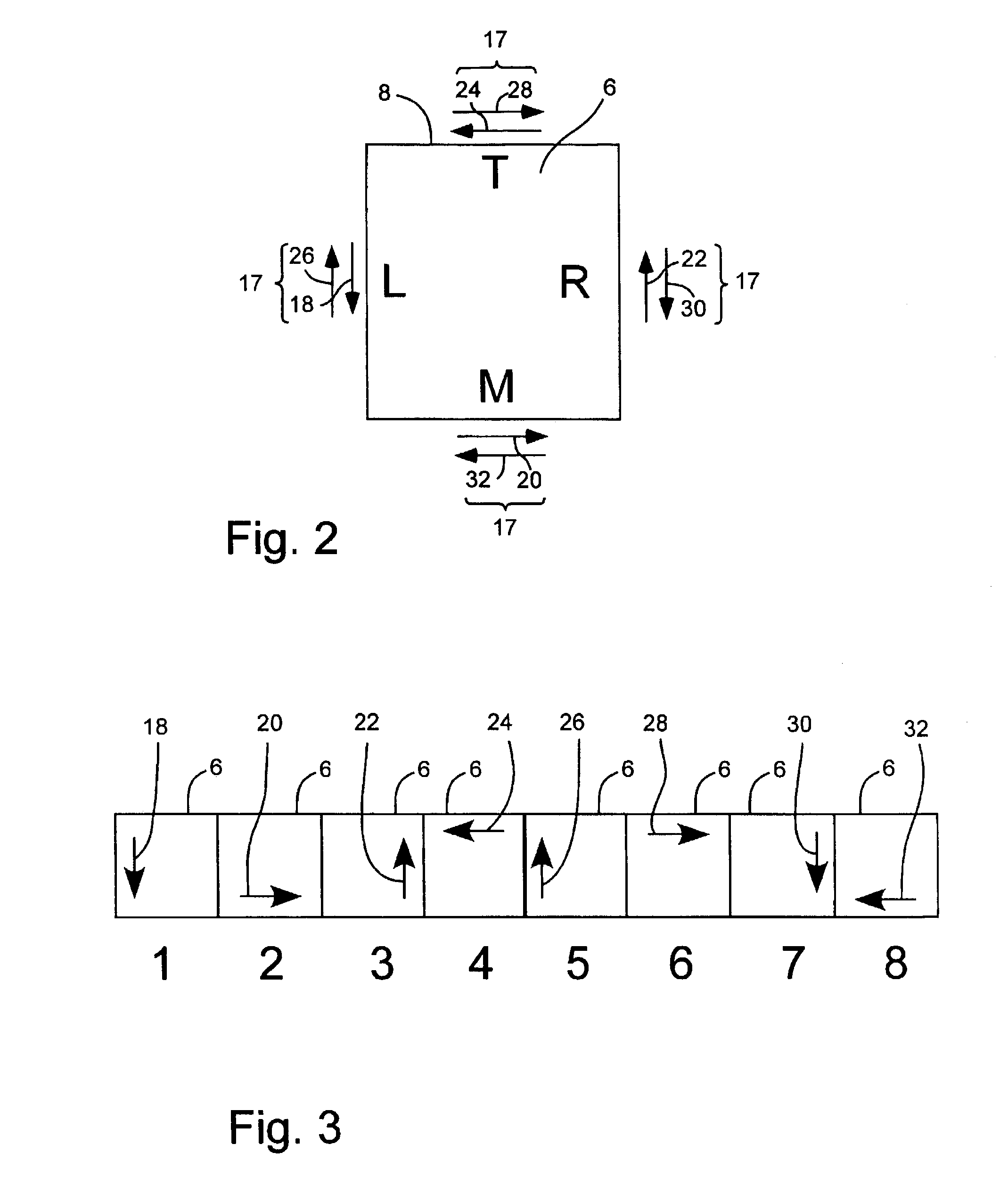Symbol encoding apparatus and method
a symbol and encoding technology, applied in the field of symbol encoding apparatus and method, can solve the problems of large weight of full-size keyboard suitable for high-speed operation, relatively slow and cumbersome methods, and difficulty in transporting
- Summary
- Abstract
- Description
- Claims
- Application Information
AI Technical Summary
Benefits of technology
Problems solved by technology
Method used
Image
Examples
Embodiment Construction
[0066]As shown by FIG. 1, to encode a symbol using the method of the Invention, a user imagines a polygon 2 appearing on the surface of a glance pad 4. The polygon 2 is imaginary and is not a physical object. The purpose of imagining the polygon 2 is to assist the user in visualizing the method of the Invention. The imaginary polygon 2 can have any number of sides and can be regular or irregular, but a rectangle 6 having four sides 8 is preferred. The user further imagines that the rectangle 6 is assigned to one of user's fingers 10. The user imagines that the rectangle 6 tracks the finger 10 assigned to that rectangle 6 on the surface of the glance pad 4 and that the rectangle 6 therefore moves with the hand 12 of user. The user imagines that the imaginary rectangle 6 remains centered on the finger 10 to which the rectangle 6 is assigned.
[0067]The imaginary rectangle 6 has four sides and further has two directions 14, 16 of motion with respect to each side; namely, clockwise 14 and...
PUM
 Login to View More
Login to View More Abstract
Description
Claims
Application Information
 Login to View More
Login to View More - R&D
- Intellectual Property
- Life Sciences
- Materials
- Tech Scout
- Unparalleled Data Quality
- Higher Quality Content
- 60% Fewer Hallucinations
Browse by: Latest US Patents, China's latest patents, Technical Efficacy Thesaurus, Application Domain, Technology Topic, Popular Technical Reports.
© 2025 PatSnap. All rights reserved.Legal|Privacy policy|Modern Slavery Act Transparency Statement|Sitemap|About US| Contact US: help@patsnap.com



